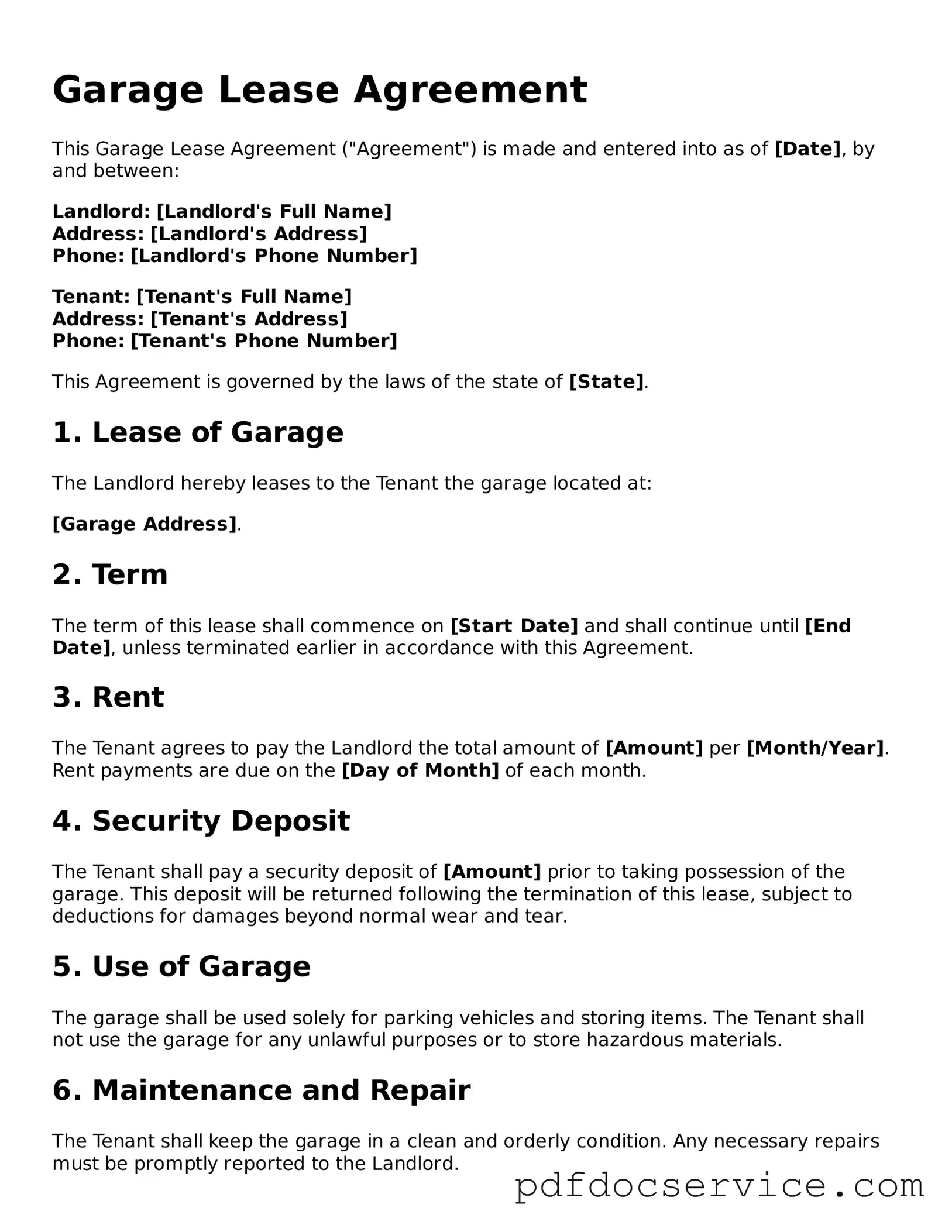What is a Garage Lease Agreement?
A Garage Lease Agreement is a legal document that outlines the terms and conditions under which one party (the lessor) allows another party (the lessee) to use a garage space. This agreement typically includes details such as the rental amount, duration of the lease, and responsibilities of both parties.
Who typically uses a Garage Lease Agreement?
Individuals or businesses that own a garage space and wish to rent it out to others commonly use this agreement. Lessees may include homeowners needing extra storage, car enthusiasts, or businesses requiring parking space for vehicles or equipment.
What are the key components of a Garage Lease Agreement?
A comprehensive Garage Lease Agreement generally includes the following components:
-
Parties involved in the lease
-
Description of the garage space
-
Lease term (start and end dates)
-
Rental payment details (amount, due date, payment method)
-
Security deposit information
-
Maintenance responsibilities
-
Termination conditions
-
Liability and insurance requirements
How long is a typical Garage Lease Agreement?
The duration of a Garage Lease Agreement can vary widely. Some leases may be month-to-month, while others might span several months or even years. The specific term should be clearly stated in the agreement.
Can a Garage Lease Agreement be renewed?
Yes, many Garage Lease Agreements include a renewal clause. This clause allows the lessee to extend the lease under the same terms or negotiate new terms. Both parties should agree to any renewal in writing.
What happens if the lessee fails to pay rent?
If the lessee fails to pay rent as agreed, the lessor may have the right to terminate the lease. The specific procedures for handling non-payment should be outlined in the agreement. Typically, a notice period is required before eviction proceedings can begin.
Is a Garage Lease Agreement legally binding?
Yes, once both parties sign the Garage Lease Agreement, it becomes a legally binding contract. Both the lessor and lessee are obligated to adhere to the terms outlined in the agreement. Failure to comply can result in legal consequences.
Can modifications be made to a Garage Lease Agreement?
Modifications can be made to a Garage Lease Agreement, but they should be documented in writing and signed by both parties. Verbal agreements or informal changes may not be enforceable.
What should be done if a dispute arises?
If a dispute arises between the lessor and lessee, both parties should first attempt to resolve the issue through communication. If this is unsuccessful, they may consider mediation or arbitration. Legal action can be a last resort if the dispute cannot be resolved amicably.
